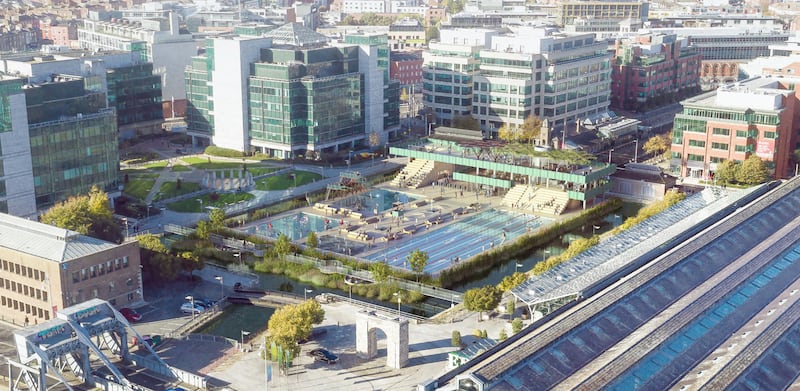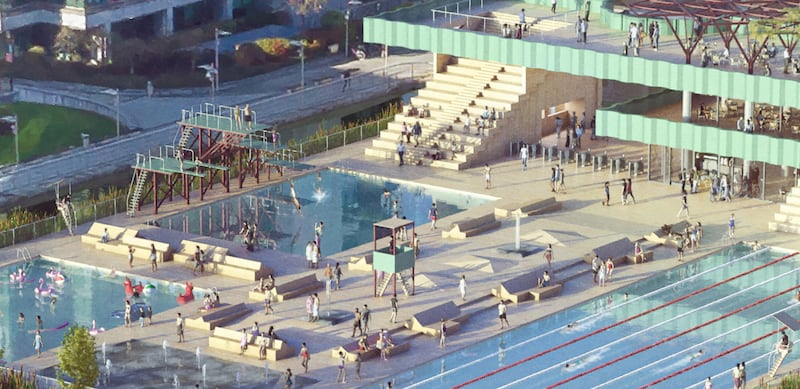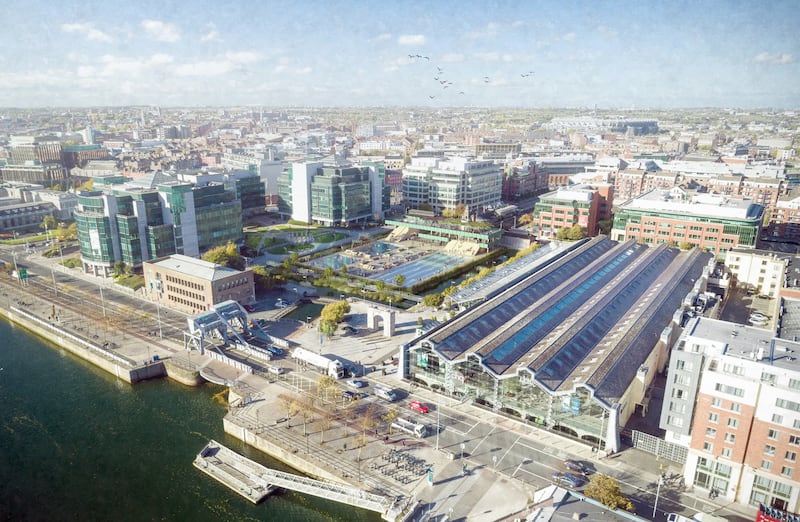Proposals for a heated outdoor swimming pool at George’s Dock, which would not include a “swift water” training facility, have been presented to Dublin city councillors.
Last July the council announced plans for a public pool or “lido” and an emergency services training centre at the site, instead of the previously planned controversial white-water rafting scheme.
These plans, estimated to cost at least €25 million, would result in 60 per cent of the site devoted to public pools and 40 per cent for a “swift water training facility” for Dublin Fire Brigade. However, the plans have yet to progress.
A campaign group based in the docklands is seeking to remove the training facility from the plans so the site can be a used entirely as a public lido.
RM Block
In a presentation to local councillors on Tuesday the George’s Dock Lido Committee said the site should have an “Olympic-scale 50-metre all-season heated pool”, a smaller learning pool, diving boards, saunas, water gardens with public seating, performance areas, community function rooms, a restaurant, cafe, and viewing gallery.
However, campaign spokesman Patrick Earls said, it should not include the fire brigade facility.
“We feel it is trying to shoehorn too much into too little space to have the emergency service training centre there. It would hugely reduce the space available for public use and fails to grasp the importance of a once-off opportunity to contribute positively to the lives of Dubliners now and into the future.”

There were “many more suitable sites” which could be used for the training facility he said.
“We acknowledge the importance of providing the emergency services with proper facilities but would suggest it should be a separate project and not incorporated into the George’s Dock lido.”
The campaign group had consulted locally and nationally and had received strong support for the proposal he said. “The support for this has been huge, it’s been like pushing an open door. There has been huge support among councillors, local TD’s, community members, local businesses, large corporations, swimming bodies, polo clubs, and Dubliners and citizens across the country.”

Councillors were broadly enthusiastic about the lido, but Independent councillor Nial Ring said he was not ready to support the project.
“I don’t want to throw cold water or even warm heated water on to this idea,” he said “I don’t think we’re pushing an open door here. The main failure on this is the absolute dearth of figures there’s absolutely no numbers how much this is going to cost.”
Mr Ring said he agreed the site should not be used for a swift water training facility but neither was he convinced by the lido plan. “This lido thing has been floated for a long time and I’m not sure it is what is needed down there. I would be saying let’s get more information let’s talk to the community the people who actually live down there”.

Mr Earls said similar facilities in the UK had cost £15 million-£20 million. Running costs “would be considerable” he said, but there was the potential for “revenue generating activities” through an associated restaurant or cafe, as well as rental to clubs and event use. Corporate membership for the surrounding docklands companies could also be used to subsidise community use. The facility could also be highly sustainable through the use of heated water from Ringsend incinerator, he said.
[ White-water rafting scuppered by costs, delays and icy sentimentOpens in new window ]
Councillors agreed to refer the proposal to the council’s docklands office for review.
Plans for a €12 million white-water rafting facility – which would have included a water polo and kayaking pool, as well as the water-rescue training facility – were originally presented to councillors in January 2019.
By December of that year, when it was approved by councillors, the cost had risen to €23 million. When the council sought expressions of interest to build the scheme in January 2021, it had hit the €25 million mark.
The project was axed following strenuous public opposition, a reversal of support by councillors, and a failure to secure Government funding.















